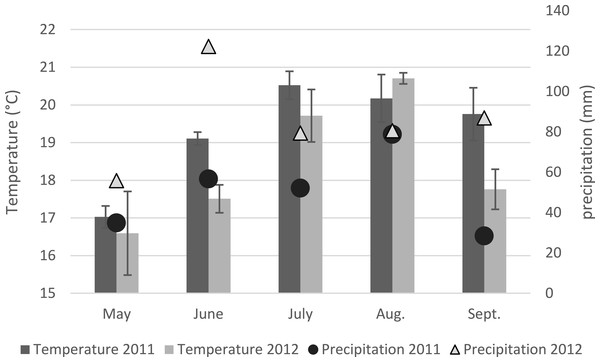
Pre-harvest contamination of forage maize by mycotoxin producing Fusarium species was investigated in the UK in 2011 and 2012. A total of 15 Fusarium species were identified from a collection of 1,761 Fusarium isolates recovered from maize stalks and kernels. This study characterized the diversity of Fusarium species present in forage maize in the UK. The predominant species detected were F. graminearum (32.9%) and F. culmorum (34.1%). Along with those species; F. avenacem, F. cerealis, F. equiseti, F. langsethiae, F. napiforme, F. oxysporum, F. poae, F. proliferatum, F. scripi, F. solani, F. subglutinans, F. tricinctum and, F. verticillioides were occasionally isolated. The trichothecene genotypes for F. graminearum were determined to be 84.9% deoxynivalenol (DON) and 15.0% nivalenol (NIV) while F. culmorum isolates were determined to have 24.9% DON and 75.1% NIV genotypes. A Bayesian model-based clustering method with nine variable number of tandem repeat markers was used to evaluate the population genetic structure of 277 F. graminearum isolates from the maize and wheat in the UK. There were three genetic clusters detected which were DON in maize, NIV in maize and DON in wheat. There were high admixture probabilities for 14.1% of the isolates in the populations. In conclusion, increased maize production in the UK and the high admixture rates in a significant portion of F. graminearum populations in maize and wheat will contribute to a new pathogen population which will further complicate breeding strategies for tolerance or resistance to this pathogen in both crops.
from #MedicinebyAlexandrosSfakianakis via xlomafota13 on Inoreader http://ift.tt/28LBKQo
via
IFTTT
Δεν υπάρχουν σχόλια:
Δημοσίευση σχολίου